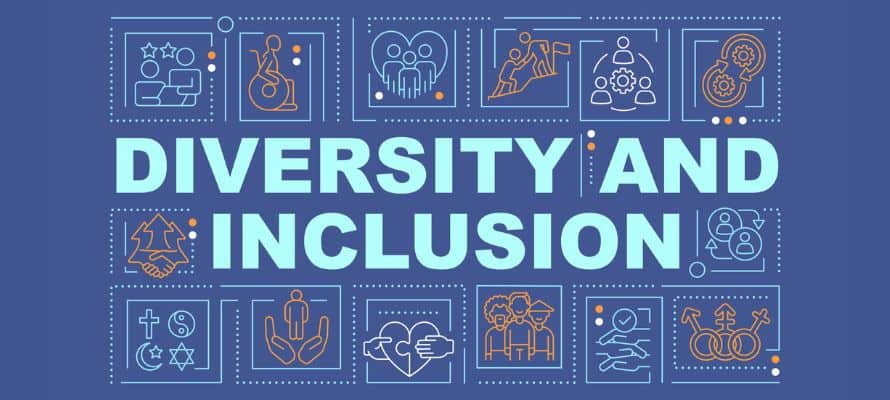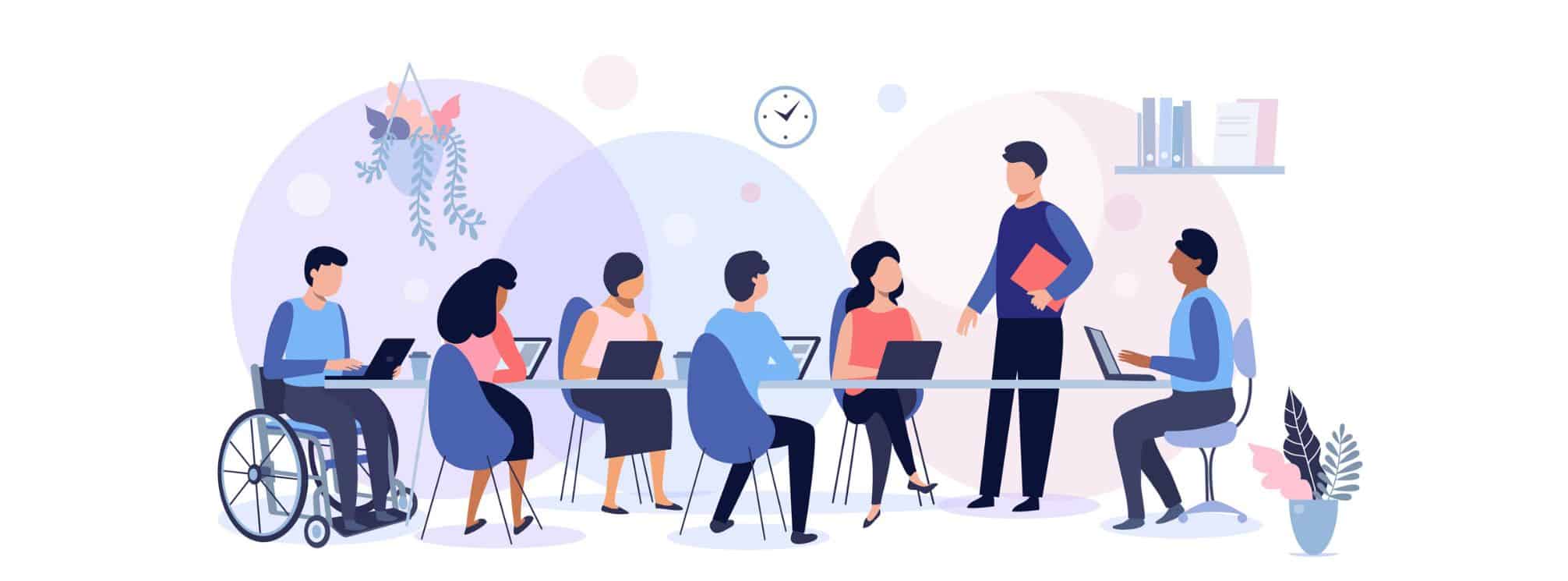
Diversity and inclusion needs to be a movement not a moment. If we want to create a better employee experience where employees feel like they belong at work, DEI work is essential. But after companies made big promises in 2020…they’re now laying off their DEI teams. Although budgets are tight this year, we think this is a big mistake. Employees want change and they want to work for companies that reflect their values. And removing the department responsible for creating healthier cultures with more work-life balance and psychological safety, hurts your ability to retain and engage your teams.
So, how can internal communication teams step up and ensure that this critical work continues?
One of the first big problems with improving diversity and inclusion in the workplace is that it’s not well understood. A lot of people hear DEI and think it’s all about who and how you hire talent. While hiring practices are a piece of DEI work, it’s far from the whole story.
Diversity, equity, and inclusion is all about empowering, accepting, and providing fair opportunity to people regardless of their characteristics, traits, and cultural groups. This includes a person’s age, gender identity, sexual orientation, socioeconomic status, education level, race, religion, and whether or not they have a disability.
Those categories should be familiar to you—remember all those workplace harassment training you’ve had to take? They all focus on these types of workplace discrimination that occur. The reason those trainings are important is because people who aren’t in the “majority” often face explicit or implicit discrimination at work.
Diversity and inclusion programs exist to create more equitable, safer, and thoughtful workplaces. They aren’t just about hiring practices. DEI work is about:

First and foremost, the benefit of improving diversity and inclusion at work is that you create safer, more welcoming workplaces where all employees can thrive. The mental health and wellbeing of your employees should be a top priority.
But if you’re trying to convince your senior leadership team to invest in their DEI efforts, there is a very strong business case for DEI:
Diversity and inclusion is not the responsibility of one single department. This isn’t just an HR thing. Everyone is responsible for advancing DEI in our workplaces.
Our advice is to remember who your diversity and inclusion program is for. Your employees. They should have a big voice in what their workplace looks like. And leadership needs to sponsor this program—you won’t get far if you don’t have a leadership team who believes that the workplace should work for everyone.
But that doesn’t mean that internal communications and HR don’t have a big role to play. Because you absolutely do! You often are the connection between the voice of the employee and the senior leadership team. And the internal comms team is responsible for how and when things get communicated. Use your position to ensure that at least how you communicate with your people is respectful and takes into consideration the diverse wants and needs of your employee population.
So, what are some tangible ways that you can start improving DEI at your company? Here are four ways you can start even if your company doesn’t have a formal diversity and inclusion program.
Inclusive cultures are considerate of how employees feel. To show employees that their thoughts and feelings are your priority, we recommend using empathy maps.
An empathy map is an exercise you can use to understand how a change or announcement might impact different employee groups.
You can then use the results of your empathy map to construct an internal communication strategy that meets your employees where they are emotionally—and literally. Because we all have different wants and needs, this exercise will help you create more targeted campaigns that create a more equitable experience as you navigate changes in the workplace.
[optin-monster slug=”s3iuunaeun1kawkzrzia” followrules=”true”]
An ERG is an employee-led group that creates safe spaces for transparent conversations about issues important to your people.
Some companies have already created ERGs where diversity is celebrated. But if you haven’t helped advocate for employee resource groups at your company, it’s time to consider it. These safe spaces are an important step in building psychological safety for your employees, and they give them a chance to lead the DEI movement at your company.
This is the time to shift that focus and identify opportunities in the workplace and the community where your company can end systemic racism and inequality. Make sure your ERGs include employees of all races, cultures, sexual orientations, ages, jobs, and at least one executive sponsor. (Don’t forget your frontline workers!)
If you don’t have an executive specializing in DEI, find an outside resource who can support this effort. One of the most important things we can do within our companies is to acknowledge our shortcomings and correct them.

Some employees may not realize how non-diverse their company is and why that matters. Communicators can work with HR to gather data beyond who makes up the workforce.
Internal communicators have a responsibility to bring the voices of all employees to the executive team and hold them accountable.
One of the barriers to improving DEI at work is that it’s misunderstood. Your employees might not know enough about the topic and the role they play in making the workplace better for their colleagues.
It’s important to educate our employees about things like unconscious bias, inclusive language, and the damaging impacts we can have on our colleagues. It’s equally important to make employees aware of the resources available to them if they feel discriminated against at work.
Microlearning, anti-discrimination training, and other types of educational materials can be very helpful to start building awareness and strengthening empathy among your teams. Internal comms can help ensure this kind of information get in front of your teams on a regular basis.
As diversity advocate Vernã Myers said: “Diversity is being invited to the party. Inclusion is being asked to dance.”
When you bring your diversity, equity, and inclusion plan together, make sure it is clear and actionable. Too often, these plans are all talk. We do not always give them the budget, resources, and leadership sponsorship required to accomplish. We need to embed our plans in the company culture to abolish inequality in the workplace.
And it’s critical that you make sure messages reach all employees directly so they can share their feedback. Unfortunately, conversations about DEI often stay within the corporate office. Make sure you include your remote and frontline workers in this movement too.
[optin-monster slug=”gqorn0natkqgyrtjvr6i” followrules=”true”]